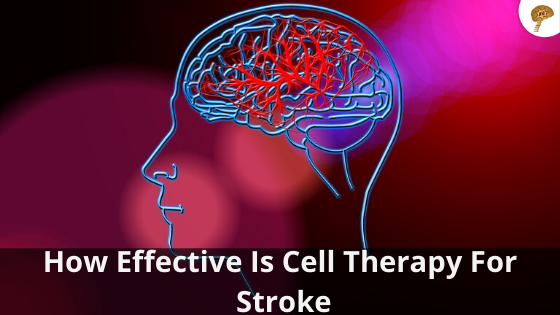
Stroke is a leading cause of disabilities and death in young and aged alike and if not treated, it may lead to permanent brain damage. A promising treatment that involves autologous stem cells triggers fresh cell growth and the formation of new brain tissue and blood vessels. Stroke cell treatment along with rehabilitation therapies restore lost neural connectivity, improve functional recovery, and enhanced motor functions.
A stroke occurs when the blood supply to the vital parts of the brain is either reduced or completely blocked. The obstruction can be caused in two ways through:
- Ischaemic Stroke: Blood clots that hamper the normal flow of blood supply to the brain
- Hemorrhagic Stroke: This occurs when the blood vessel bursts (due to ruptured or weak walls) spilling blood into the brain
As the brain needs a good supply of oxygenated blood to function properly, a restricted flow deprives it of vital nutrients and oxygen which ultimately results in cell deaths and tissue damage. The effects of this damage depend on the area and the extent of brain damage.
Stroke Symptoms
Symptoms of stroke depend on the area of the brain that is affected by stroke, its intensity and the type of stroke. Common signs include:
- Paralysis of the facial muscles and a drooped look on one side of the face
- Inability to lift one or both the arms because of numbness in the upper body
- Slurred speech that is difficult to understand
- Headache due to accumulated blood and clots in the brain
- Drooping eyelid on the side affected by paralysis
- Impaired vision and hearing
- Loss of balance and unsteady gait
- Trouble while swallowing
If earlier medical attention is provided for stroke, there is less risk of adverse consequences.
Stem cells
Human body cells, such as the cells of the brain, bones, and muscles, are unable to repair themselves if they get damaged. But, with autologous stem cells, there is a high possibility of repairing the damaged tissues and regaining the lost abilities of the organs. These stem cells are in a dormant state but have the ability to generate crucial brain cells when harvested from the marrow tissue and awake. They have the potential to produce neurons and glia, which are the key cell types found in the human brain.
The autologous bone marrow-derived stem cells facilitate many mechanisms of action that make them ideal for treating a range of degenerative and inflammatory diseases. These autologous mesenchymal stem cells have therapeutic properties favourable for repairing and regenerating damaged neuronal cells after a stroke, reduce the chances of secondary neuroinflammatory cascades, and in providing better outcomes. Thus, stroke cell treatment cannot completely reverse the symptoms of a stroke but brings about favourable improvement in patients.
Anyone, irrespective of their age can have a stroke due to some risk factors that include family history, high blood pressure, excessive smoking and eating an unhealthy diet high in fat and salt. Doctors recommend people to stay physically active and avoid smoking.
The new therapeutic approach using stem cells (rather than medicines) promotes cell repair of the injured brain, reduces further damage and helps to accelerate the healing process.








